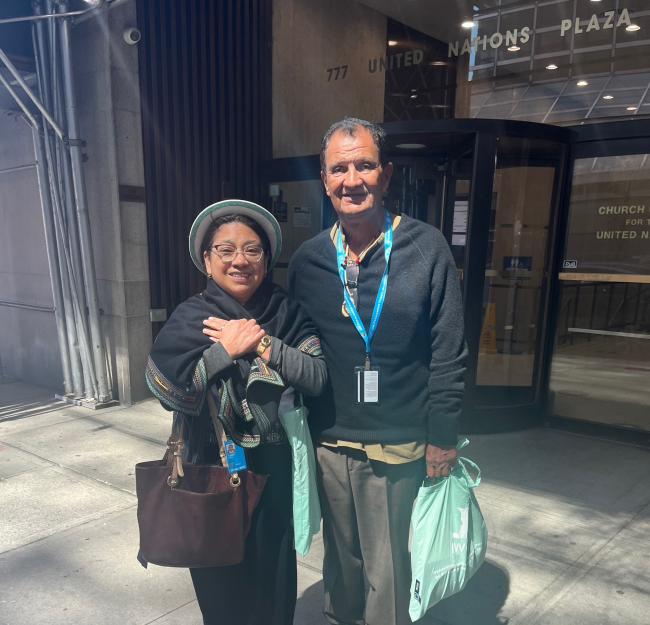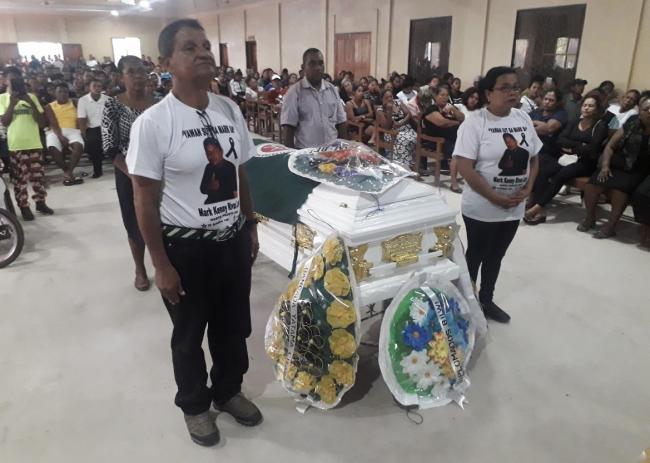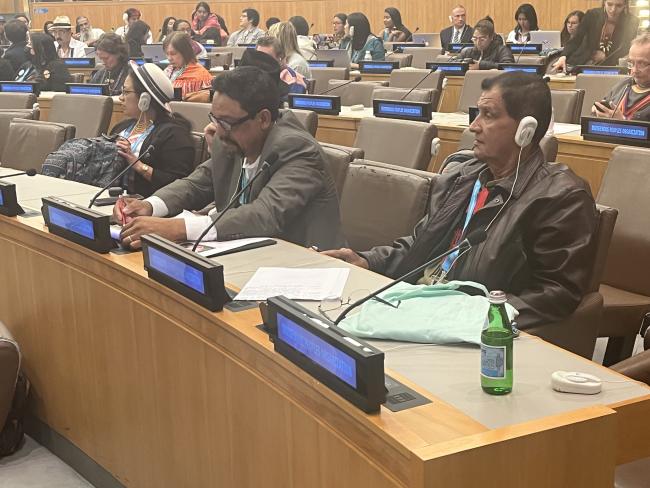
Indigenous Miskitu migrants from Nicaragua began planning their departure for the United States the moment Daniel Ortega cemented his reelection in November 2021, securing his fourth consecutive and fifth overall term as president. In April 2022, following the relaxation of Covid-19 restrictions across Central America, a grand exodus of Miskitu migrants began. Melécio Peter, a Miskitu Catholic priest in Houston who assists the migrants, estimates that 10,000 young Miskitu men and women had left for the southwestern U.S. border by late December 2022. By October, Father Peter’s estimate had risen to up to 15,000. The departures marked the first significant escalation of Miskitu migration to the United States since Nicaragua’s 1980s civil war.
The Miskitu migrants, like other Nicaraguans, are fleeing the country mainly due to political and economic repression that has accompanied Ortega’s developing authoritarian government. The UN High Commissioner for Refugees stated that since 2018, more than 200,000 Nicaraguans have fled the country. Most asylum seekers have fled to Costa Rica, but the U.S.-Mexico border is an increasing destination for Nicaraguans seeking refuge, with over 163,000 encounters at the border in 2022. Therefore, following Melecio Peter’s estimates, Miskitu migrants accounted for an estimated 6 percent of all border encounters with Nicaraguans in that period.
In September, the Ortega administration arbitrarily detained and disappeared longtime Miskitu leader Brooklyn Rivera, highlighting the need for special protections for Miskitu refugees.
A Historically Fraught Relationship
The Mosquito Coast (called La Mosquitia in Spanish) is an ancestral territory in eastern Honduras and Nicaragua named after the largest Indigenous group that lives there, the Miskitu nation, which has a population of 175,000. The Indigenous Mayangna and Rama, Afro-Indigenous Garifuna, Afrodescendant Kriols, and mestizo peoples also reside within this pluri-ethnic homeland.
The Mosquito Coast has a unique geopolitical history in Central America. During the colonial period, the British dominated the region, which became known as the Kingdom of Mosquitia (1687-1860) with its own system of kingship. As allies of the British, the Miskitu fought against the Spanish invasion from the west and defended their lands. The Mosquito Coast was not militarily incorporated into the Republic of Nicaragua until 1894, when the state began enforcing Spanish culture, language, and economic and political structures. Thus began the systemic oppression of the Miskitu people in their ancestral homeland.
State repression against the Miskitu people heightened during Nicaragua’s war-torn years of the 1980s, which encompassed the failed Contra War (1981-1990) that occurred in the context of the Sandinista Revolution (1979-1990). When the Sandinista revolutionaries attempted to force the Miskitu people from their lands and assimilate them to mestizo (Spanish descendant) culture, a Miskitu faction turned against the Sandinistas and engaged in an armed Indian resistance. Later, with the support of the CIA-backed counterrevolutionary “Contras,” the Miskitu and other Caribbean coast peoples fought against the Sandinistas to protect their centuries-old autonomy, along with education in their native languages.
In 1987, the Sandinista state introduced Autonomy Law 28, which established two politically autonomous areas for coastal Caribbean peoples, the North and South Caribbean Coast Autonomous Regions (RACCN and RACCS), each with their own governments. The Nicaraguan government strengthened the autonomy law in 2003 by passing the Communal Property Law (Law 445), providing a path to demarcation and legal titles for Indigenous lands. Since Ortega returned to power in 2007, however, the Caribbean coast autonomy project has been severely diminished, if not abandoned. As one Miskitu leader lamented, “It’s shameful to talk about autonomy now.”
Violent Land Invasions
Three decades after fighting for and being granted the politically autonomous regions, Miskitu youth today are fleeing their homeland. The violent invasion of Indigenous and Afrodescendant lands by Spanish-speaking mestizo colonists (colonos in Spanish) markedly increased in 2008, spiked again in 2014, and continues today. With the complicity of Ortega’s Sandinista National Liberation Front (FSLN) government, 70 percent of the autonomous regions are now invaded. In violent attacks and bloody conflicts since 2014, colonos armed with automatic weapons have injured, kidnapped, or killed over 120 Indigenous Miskitu and Mayangna land defenders, mainly in the RACCN territories of Wangki Twi-Tasba Raya, Li Aubra, Li Lamni Tasbaya Kum, Palo Paiwas, and Bosawas.
Colonos came to the coast because of drought and the privatization of large land holdings on the Pacific; they then cleared rainforest lands and brought in cattle, destroying the forests and waterways. Food insecurity escalated among Miskitu communities, and malnutrition has been on the rise. “We have a hard time earning a living because we cannot go to our fields or hunt without risk of being killed by the armed colonists,” said Constantino Romel, a Miskitu man in Wangki Twi-Tasba Raya.
The Nicaraguan government has done nothing to protect the Indigenous Miskitu and Mayangna peoples from armed attacks or from the illegal purchasing of their lands, including through fraudulent black market land titles. Similarly, no mestizos have been investigated, arrested, or prosecuted for the violence surrounding the Mayangna massacre in Alal, located within the Bosawás reserve. On January 28, 2020, an armed, organized group of criminals men killed four Mayangnas, injured three, kidnapped eight, and burned down several houses. Many believe the government had armed the colonists as paramilitaries to take over Indigenous lands and then vote for the Sandinista party in elections, paving the way for the Sandinista state to gain control over the governments of the north and south autonomous regions.

Political Repression Against Yatama
In 1987, Miskitu political leader Brooklyn Rivera founded Yatama, an abbreviation of Yapti Tasba Masraka Nanih Aslatakanka (Children of Mother Earth in Miskitu), the only Indigenous and multi-ethnic, grassroots social and political organization on the Caribbean coast. He has remained the organization’s leader and guiding force. Representing the Yatama political party, Rivera also served as an elected national congressman (2007-2015 and 2017-2023).
Violence against Miskitu Yatama members markedly increased in 2014, when Yatama broke their alliance with the FSLN (2006-2014). Yatama had accused the Sandinistas of electoral fraud in the 2014 regional elections and of not completing saneamiento, the removal of colonists from Indigenous lands, as stipulated in the Nicaraguan Communal Property Law. The failure to complete saneamiento created tensions with Yatama constituents whose lands were increasingly being invaded. More conflict with the government followed as Yatama opposed the 2013 Canal Law and the government’s proposed interoceanic waterway, which would cut through Indigenous Rama and Afrodescendant lands in the RACCS territory.
One volatile day in the RACCN capital of Puerto Cabezas-Bilwi during the 2017 municipal elections, pro-government forces set fire and burned to the ground the Yatama headquarters and community radio station that broadcast in the Miskitu language. They also toppled El Indio, the iconic statue in Bilwi’s town center that symbolized the 1980s Indigenous struggle. In the following days, over 100 Yatama sympathizers were arrested and taken to jail, several of whom claim to have been tortured. These tactics of intimidation, persecution, and bodily harm against Miskitu Yatama supporters and their families have continued and are a major cause of migration, if not forced exile.
Repression ramped up in the months leading up to the 2021 general elections that Ortega won after eliminating potential competition, and the following year, the Sandinistas claimed victory in every alcaldia (municipal government) in the country. When asked at the time about the projected loss of Yatama votes due to its members fleeing to the United States prior to the 2022 municipal elections, Yatama leader Rivera said: “I’m not concerned with losing votes but am more worried about…the future of the Miskitu nation and the autonomy project.” He paused. “And it’s the youth who are leaving.” For Rivera, the younger generation represents the future and hope for the Miskitu nation.
On September 29, 2023, just days after his 71st birthday, the government’s special police forces sent from Managua arrested and then disappeared Rivera from his home in Bilwi. The government closed down Yatama’s community radio station Yapti Tasba Bila Babaikra (The Voice of Mother Earth) and cancelled Yatama’s legal status, vacating its status as a political party. Police also arbitrarily detained Yatama director and Rivera’s alternate in the National Assembly, Nancy Elizabeth Henríquez. In December 2023, Henríquez was sentenced to eight years in prison for the alleged crimes of undermining national integrity and the propagation of false news detrimental to the state of Nicaragua. Henríguez is being held at La Esperanza women’s prison. Rivera’s whereabouts are still unknown.
The Sandinista regime has long considered Yatama resistance to be a thorn in their side and wanted to silence their leaders. Yatama persecution contradicts the official Sandinista state narrative regarding its respect for Indigenous rights and political and cultural autonomy. Yatama leaders persistently called for fair elections, saneamiento, and a real autonomy, not just on paper. Additionally, leaning on the history of the Contra war, the FSLN has long attempted to criminalize Yatama resistance by associating it with U.S. intervention.

Protections for Miskitu Migrants
Nicaraguans are eligible for Temporary Protected Status (TPS) in the United States, but the Miskitu people deserve additional protections as an Indigenous and persecuted sector in Nicaragua. Even though the Miskitu fought as allies of the United States in the 1980s Contra War against the same FSLN guerilla-leader-cum-president who now rules Nicaragua with an iron fist, the United States has extended no such special protections.
During U.S. Immigration Court proceedings, Miskitu applicants seeking various forms of relief, such as asylum, protections against torture, and cancellation of removal, should be granted special considerations. A precedent for the withholding of deportation has already been established. In the 1986 legal case of Damaize-Job v. I.N.S, (U.S. Court of Appeals, Ninth Circuit), the court decided that all Miskitu should be considered persecuted by the Sandinistas based on their ethnic affiliation as Miskitu. Indeed, the ruling states that “the former United States Secretary of State has characterized the Sandinistas' treatment of Miskitos in Nicaragua as ‘genocide.’”
“I view the Sandinistas as the Miskitu’s biggest enemy,” said Ulu Hacksel, a 34-year-old Miskitu Yatama leader from Bilwi whose father was killed in the war when he was a small child. “They have killed Miskitu leaders in violence over land disagreements and they believe Indigenous people are worthless and deserve no rights. I fear the Sandinistas would exterminate us if they could.”
Laura Hobson Herlihy received her doctorate in anthropology from the University of Kansas in 2002 and has since worked as a lecturer in the KU Center of Latin American and Caribbean Studies. Herlihy has completed research among the Honduran and Nicaraguan Miskitu for over twenty-five years.

